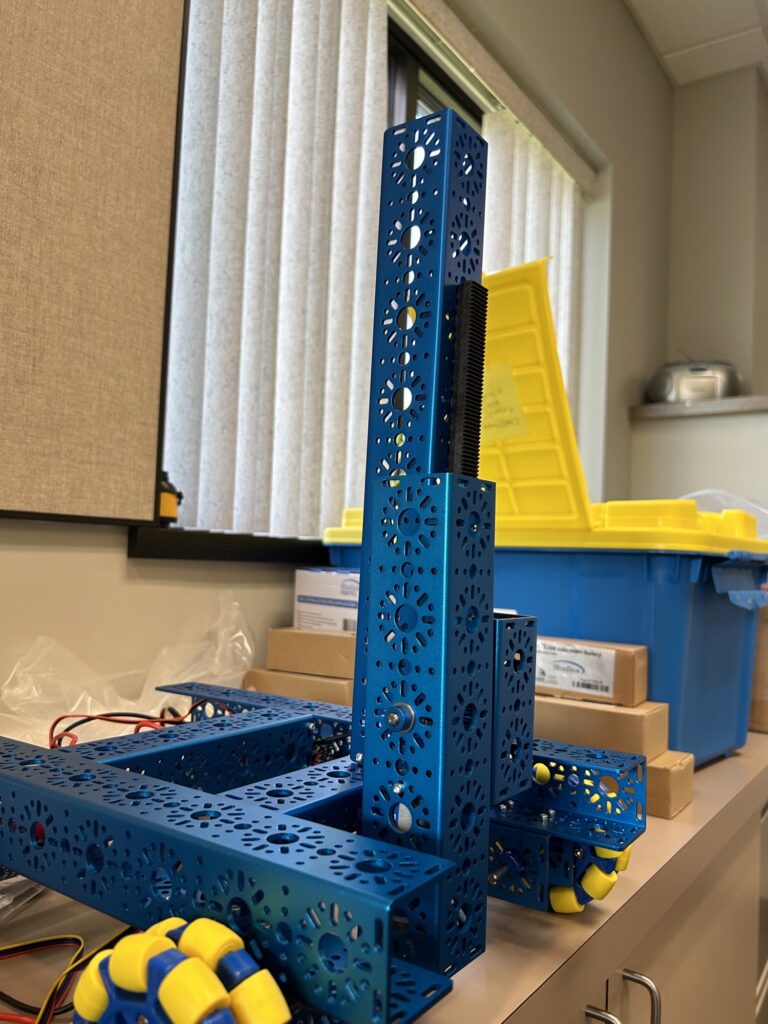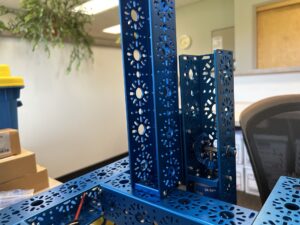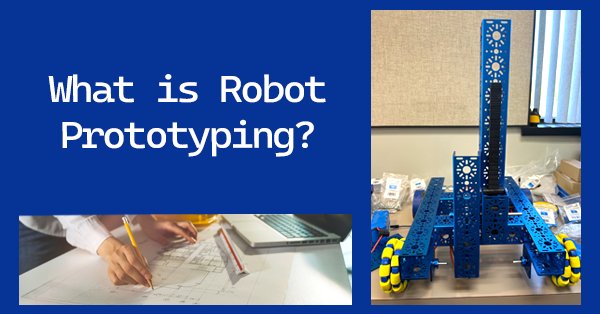
If you are building a robot for a robotics competition, class project, or your own personal joy – prototyping is a crucial step in engineering design. After you have decided what you want your robot to do and adjusted for any specific parameters, you can start to brainstorm what your design will be. Once you have your design sketched out or a CAD model created, it is time to test and refine. In simple terms, robot prototyping is the process of taking your ideas, creating a preliminary mock-up of your robot design, testing, collecting data, adjusting, and more testing until we get to the desired level of performance.
Be sure to test your mechanisms, designs, and even your robot performing the tasks that are required of it. The purpose of this process is to ensure your robot design is corrected for any flaws and can complete the task as it is designed. Your tests should reflect the purpose of the type of robot you are creating. Autonomous mobile robots such as field robots should be challenged with tasks related to their purpose.
For example, this photo shows a prototype of a lift that we are working on using parts from the Studica Robotics FTC Starter Kit.
What is the Purpose of Prototyping?
The main goal of prototyping for robotics is simple – test your design and gather data, review the results, and find ways to fix any issues and improve your robot’s performance. Think of it as a journey – as you identify each change and adjust your robot prototype, you will need to re-test it. Have patience, this is not a one-and-done. As you progress through this process, you can gradually increase the fidelity of your prototype. What does it mean to increase the fidelity of your prototype? This simply means that you continually enhance and add details to your prototype to the point where it bears a strong likeness to what your final robot will look and behave like. Prototyping can also be useful for automation and part manufacturing.
Advantages of a Robot Prototype
At Studica, we have a lot of experience working with teams in robot competitions. In fact, Studica Robotics is a Global Partner and exclusive supplier for the WorldSkills Autonomous Mobile Robotics Competition. We’ve seen the many reasons why creating robot prototypes is important. First of all, creating the prototype allows you to effectively communicate your design if you are working with your robotics team or another group. It gets everyone on the same and is an ideal opportunity to solve any misinterpretations. It also identifies any design flaws or errors and provides the opportunity to collaborate with your team. Advantages of robot prototyping include shorter development time, reduced cost, better performance, and the knowledge you gain as you troubleshoot issues. Prototyping is an important part of engineering design.
Tools for Building a Prototype
Let’s talk about building your prototype. The purpose is to build and make changes quickly and of course, track that data. Think like a minimalist. What is the bare minimum that you need to build to test the items you are looking to solve? Use simple materials that you can easily build and adjust to replicate your design ideas. Remember your prototype should be fluid and evolving, it should not stay the same for a long time.
 What should you build with? Robot prototypes can be simple. Use what you have on hand – PVC pipe, wood, cardboard, springs, spare parts, and get that roll of duct tape ready. Use clamps, weights, and vices to help hold everything together. Have an old chassis lying around? Use it. You can also 3D print any parts that you don’t have on type for this stage.
What should you build with? Robot prototypes can be simple. Use what you have on hand – PVC pipe, wood, cardboard, springs, spare parts, and get that roll of duct tape ready. Use clamps, weights, and vices to help hold everything together. Have an old chassis lying around? Use it. You can also 3D print any parts that you don’t have on type for this stage.
Studica Robotics also offers a variety of robot parts and robotics components including mechanical structures, motion components, and electronics. Our channel and other structural components as well as motion components are ideal for prototyping. Studica Robotics is utilized in the classroom for teaching, for robot competitions, in the industry, and by hobbyists for prototyping robots and automation cells. Prototyping equipment varies based on the sophistication of the robot being designed.
Share this Post

